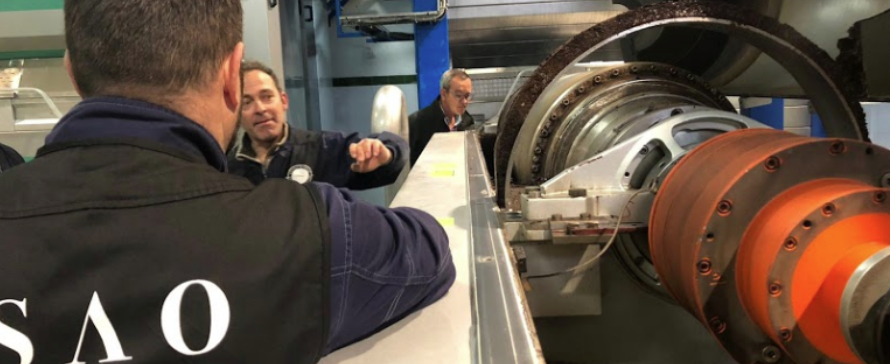Listen to this article
One can never overemphasize the importance of good maintenance and proper useage of olive oil machinery.
By following a proper maintenance plan we can:
- Reduce breakage, prevent malfunctions.
- Avoid unwanted shutdowns.
- Extend the lifespan of equipment and facilities.
- Save money by reducing breakage.
From the patio to the vertical centrifuge, from electricity to instruction manuals, we at the ESAO will be presenting a series of posts dealing with:
- Different types of maintenance.
- Lubricants and types of grease that give best results.
- The importance of the instruction manual for every machine.
- Electrical maintenance.
- The importance of replacement parts for each machine.
- Optimal work systems that help keep the machinery in good condition.
We will follow this with important information on the most common types of mechanical and electrical breakdowns, their symptoms, possible causes and most importantly, recommendations on how to resolve the problem.
Types of maintenance.
Maintenance operations can be classified as: preventive measures, corrective measures and predictives measures.
Preventive Maintenance
Preventive maintenance is done when the machine is functioning properly.. It consists of a group of actions meant to reduce the probability that breakage will occur or to slow down naturally occuring deterioration.
The ultimate aim is to maintain the facilities in working condition by anticipating breakdowns before they happen. The goal of preventive maintenance is to keep the equipment and machinery running, and to downplay the effects of normal wear and tear.These are actions we take before any failure has occured.

Taking the machine apart to be cleaned is absolutely necessary for proper
maintenance in the mill. ESAO image bank
We recommend that preventive maintenance be systematically carried out according to pre-established protocols. It is important to have a registry to keep track of the time it takes for the most important parts to break down.
Examples of preventive maintenance in mills are: Regular lubrication, adjustments, tracking parameters, sensory inspections, minor adjustments and configurations, cleaning and preparing machinery before harvesting begins, periodic replacements of rubber seals and filters, etc.
Preventive maintenance can normally be carried out by basic level professional workers at the mill, typically on machines that are not too complicated. For more complicated equipment specialized personnel from the manufacturing company is necessary.
Corrective Maintenance
This is a set of activities done after there has been a breakdown of some kind, i.e., as breakages occur, they must be fixed. Here there is no planning ahead, it is a question of daily control of issues that must be dealt with at the moment.
This is the traditional style of maintenance that is typically used in mills. What often occurs with this type of maintenance is that olive oil production has to stop and this generates losses, both in terms of lost time and a reduction in olive oil quality.
Production cannot resume until the affected parts are totally fixed and the cause has been eliminated. It is highly advisable to reduce as much as possible these occurrence as they can greatly affect results.
Corrective maintenance should be carried out by mid-level trained personnel on the less complex machinery. For the more complicated machinery trained specialists from the manufacturer will be necessary.
It is often a matter of replacing small broken parts that do not affect the whole machine. Adaptations and improvements in the machinery both before and after the harvest are good examples of corrective maintenance.
Predictive Maintenance
This kind of maintenance is more complex and technical. It is a set of tasks that relate a physical or chemical variable with the condition of the machine, and aims to predict when a given machine or piece of equipment will break down.
To do this requires a very good understanding of the equipment, the techniques of analysis, and above all having the tools necessary to do the job.
 Having the proper maintenance tools on hand is good policy in a mill. ESAO image bank
Having the proper maintenance tools on hand is good policy in a mill. ESAO image bank
Examples of analytical tools are tomography, ultrasound, vibration analysis, oil analysis, combustion fumes, etc.
Issues to be analyzed include bearing vibration, electrical connection temperature, resistance factor of the motor coil insulation, etc.
With this type of predictive maintenance, we save costs, as breakdowns are identified early on, before they become too problematic. With this type of maintenance we can plan for repairs, and thus have ready both the necessary parts and the right person to do the repair properly.
It is very important for the management to have a clear maintenance policy in acord with the objectives of the mill. It may be the case that a mill, for whatever reason, is only interested in corrective maintenance, while others opt for preventive or even predictive maintenance.
.png)





